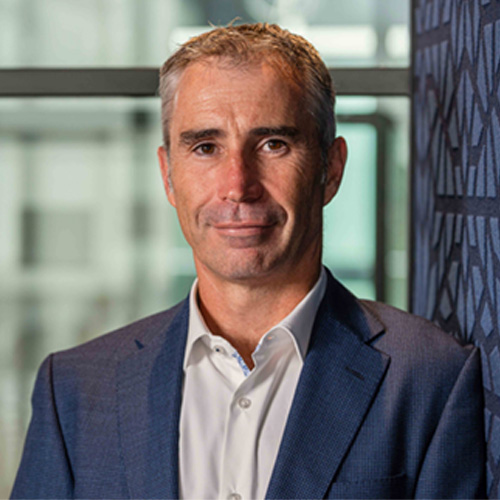Understanding the possibilities of the year ahead can be difficult and organisations scramble to decipher the trends that will catapult their Digital Transformation in the next 12 months. In this article, Mark Ackerman, Area VP for Middle East and Africa at ServiceNow, offers four major macro trends that organisations should consider for their digital investments.

Another year of Digital Transformation in the region and where do we find ourselves? Much as we do at the end of any year – lessons learned and challenges ahead. For the past 30 months or so we have been grappling with change so deep and broad that it is bringing about dramatic cultural shifts from boardrooms to the enterprise front line.
Faced with the very real possibility of market irrelevance, organisations across all industries are adjusting relationships with their workforces, looking into new business models and experimenting with new technologies to compete and thrive.
In 2023, we should expect regional business leaders to demand more ROI on technology investments. Inflation rates may be lower in the GCC than they are in the Americas or Europe, but they are still of concern. The right digital investments could have a corrective impact on the bottom line.
It is already hard to imagine a modern business that is not, to some extent, digital. As we wade ever deeper into the Fourth Industrial Revolution (yes, it’s still with us), businesses should be prepared to address a range of issues, from the employee experience and its association with technology procurement to the on-going pressures of regulatory compliance and ESG.
Here are four trends that will shape the region’s digitisation stories in 2023.
1. Employee expectations regarding flexible working
In May this year, multiple media sources in the UAE were abuzz with the finding in a Cisco survey that 90% of the nation’s workers preferred remote or hybrid work and that 61% would be less likely to look elsewhere for opportunities if their employer implemented flexible work schedules.
Collaboration tools and the plethora of supporting platforms that governed, monitored and scheduled work from afar during pandemic lockdowns were not wasted investments. The technology foundation is there to accommodate the relatively young workforces that span the Middle East and Africa.
The good news is that businesses have already seen the productivity benefits that go along with home-based work. Far from the feared slow delivery and stale service that stopped pre-pandemic moves to remote-work models, we have seen staff morale and productivity receive notable boosts. Flexibility and automated workflows are recruiting badges, attracting young and driven professionals with much to offer. Firms will have a choice – deliver flexible work or try to get by with a stale unmotivated workforce.
2. Talent sought, but where?
This issue compounds the first in that the very talent that is expecting enhanced work experiences can afford to make such demands because it is also in short supply. As time goes on, companies that do not respond to such trends will be hit by talent drains that will impact operations and service levels. At the same time, these same elements will be enhanced at enterprises that offer more alluring environments to their staff.
A recent survey by PwC showed that 47% of Middle East companies were addressing talent gaps by upskilling their workforces. Meanwhile, some 32% had opted for automation, including automation that enhanced the employee experience. This digitisation taking place side by side with upskilling is the ideal environment for young professionals, as it gels with their outlook and ambition. So, in 2023, tools and training that empower each employee to innovate independently while working flexibly will be critical.
3. AI and business intelligence
In a crisis, everyone looks around for reassurance. Businesses look around for ways of getting through the crisis and becoming immune to the next one. ‘Resilience’ has been the word of the day for countless months. It remains so because of the aftershocks of the pandemic – supply-chain issues and inflation being just two examples. AI-powered analytics does not just allow real-time insights into the efficiency of processes and the profitability of business models; it clears the way for predictive analyses that show a path to long-term success.
When technology stacks include mechanisms for extracting meaningful, useful data from structured and unstructured sources and categorising it for presentation and review, decision-makers get access to valuable knowledge. In 2023, we expect to see an innovation cycle, as the positive ROI from these technologies encourages yet more investment.
4. The continued ascendancy of ESG
Environment. Social. Governance. Everyone everywhere now expects more from brands. There is no escaping it. Care for the planet; care for the communities you serve; and care for your employees and the major issues taking place around the world. Customers care about it, employees care about it and partners care about it. Investors and shareholders care about it.
In 2023, as ESG pressure reaches critical mass, regional businesses will start to form strategies and focus groups. When complying with government, industry and market expectations, it will help to have the right talent in place. Conveniently, digital natives share an affinity with environmental and social matters. They will also be better placed to effectively use the technology platforms that produce ESG insights and drive progress in these matters.
Reach and keep reaching
Nautical metaphors are common in the digital world. In that spirit: technology has always kept us afloat. Even when we felt pushed below the surface, it had the power to bring our heads above water and, in some cases, make us soar above – high above – the waves. Those highflyers are always easily identified. They are the ones that spot trouble ahead of time. They are the ones that leverage the right technology at the right time in the right way to get the lift they need.
In 2023, they will be the ones that digitise workflows, look after employees and communities and futureproof themselves against the crises to come.
Click below to share this article

